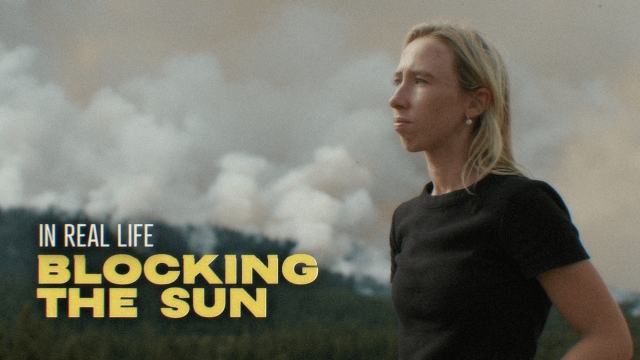Do drastic times for our climate call for drastic measures? That is the question governments around the world are asking themselves as the impacts of climate change take an increasingly deadly toll on the earth.
Plagued with raging wildfires and relentless heatwaves, some countries are now turning their attention to a controversial climate intervention measure known as solar geoengineering.
"Solar geoengineering is the idea that humans might deliberately alter the Earth's radiative balance. The balance between sunlight that comes in and infrared heat that radiates outward—that balance that creates the climate," said David Keith, lead of the Climate Systems Engineering Initiative at the University of Chicago. "They might deliberately do that to reduce some of the risks of accumulated carbon dioxide, to cool the planet, and to reduce extreme storms."
Keith, a leading advocate for research on solar geoengineering, along with other researchers, believes this could be done by making clouds or oceans more reflective of the sun's rays. But the method that gets the most attention is called stratospheric aerosol injection.
"There's a part of the atmosphere, maybe twice as high as a regular aircraft flies, where particles last for a couple of years. You could put those particles there where they were to scatter a little bit—maybe 1% of sunlight back to space. That's the thing. We studied by far the most. The thing that we're most confident in, in some crude way would work," Keith said.
In late 2022, a U.S.-based company called Make Sunsets conducted its own experiment in Mexico, releasing small amounts of sulfur dioxide into the skies above Baja California to demonstrate how solar geoengineering could be done by private companies. They did this without permission from Mexico's government. And just a few weeks later, Mexico became the first nation in the world to ban solar geoengineering experiments.
SEE MORE: In Real Life: Voices of Nature
For the Mexican government, Make Sunset's experiment was a stunt that crossed the line. It not only violated Mexican law but completely disregarded concerns the Mexican government has about solar geoengineering and its potential impact on the planet. Make Sunsets declined to speak with Scripps News on camera but told the network their experiment in Mexico had released less sulfur dioxide than a single 747 plane releases in one hour—and that, until Mexico is ready to work with them, they're focused on the U.S.
In 2022, Congress directed the White House Office of Science and Technology Policy to develop "an inter-agency working group" with groups like NASA, the National Oceanic and Atmospheric Administration, and the Department of Energy to "manage near-term climate hazard risk and coordinate research in climate intervention." This group was also tasked with establishing a framework to "provide guidance on transparency, engagement, and risk management for publicly funded work in solar geoengineering research."
To date, more than 400 scientists and academics have signed an open letter calling for a worldwide ban on solar geoengineering, citing concerns that its application in one country could have unintended side effects, such as droughts or severe flooding, in a neighboring nation.
"It can't solve the problem, and it will never get rid of the need to reduce the amount of carbon dioxide and other greenhouse gases in the atmosphere," former Prime Minister of Canada Kim Campbell said. "So that needs to be front and center in our minds. You know, what can we do while we still have time to do it? And will something like solar geoengineering be a device that buys us time? Maybe. But that's the most it will do. The most it can do is buy us time."
Trending stories at Scrippsnews.com



